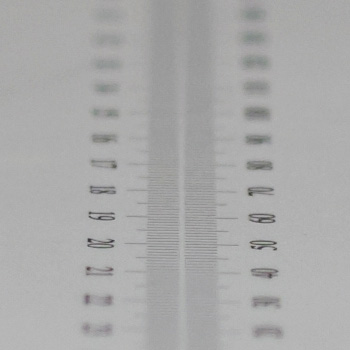|
Zeiss Touit 32mm f/1.8 (Sony) - Review / Test Report - Analysis |
|
Lens Reviews -
Sony NEX
|
|
Page 2 of 3

Distortion
It may be a bit of a shocker but despite the high price level, the Zeiss lens relies on image auto-correction when it comes to distortions. In untouched RAW files it shows a barrel distortion of 2% which is not dramatic but certainly visible in some scenes (technically at least). Oddly, at least CaptureOne produces a 1% pincushion distortion with activated auto-correction. This may vary across different RAW converters.
If you move your mouse cursor over the image you can switch to the corresponding "raw" results.
Vignetting
The lens exhibits a very high falloff of 1.6EV at max aperture and still 1.1EV at f/2.2. The problem is mostly gone from f/4 onward. Low vignetting doesn't seem to be a primary design objective at Zeiss in general.

MTF (resolution)
The Zeiss Touit 32mm f/1.8 delivered impressive results in Fujifilm X-mount so we expected a similar performance on Sony's 24mp sensor at least - plus minus a little because Fuji's AA-less sensor is quite unique. However, to our surprise this was not the case. In the past we speculated already that Sony's sensor has a rather difficult characteristic towards the image corners - the MTF readings seems to confirm this once more. The image center is actually pretty fine with a very good to excellent quality at f/1.8 and excellent if not outstanding results till f/8. The outer image region is a different story though. It is soft at max. apertures and just manages good levels at f/2.2. The quality increases gradually till reaching a very good peak at f/5.6. The field curvature is quite low.
We didn't spot any significant centering issue in the tested sample.
Please note that the MTF results are not directly comparable across the different systems!
Below is a simplified summary of the formal findings. The chart shows line widths per picture height (LW/PH) which can be taken as a measure for sharpness.
If you want to know more about the MTF50 figures you may check out the corresponding Imatest Explanations

Chromatic Aberrations (CAs)
At around 0.9px lateral CAs (color shadows at hard contrast transitions) are fairly low and usually nothing to worry about.

Bokeh
A very important aspect of an ultra-large aperture lens is the quality of the bokeh (rendering of the out-of-focus blur). The Touit can produce convincing results here.
The foreground blur is very smooth and buttery. The more important background blur is just slightly more nervous but still very good.
 Out-of-focus highlights are evenly rendered with just a slight outlining effect. The highlight discs are circular in the image center but the shape deteriorates the more you watch towards the image borders. Stopping down improves these cat’s eyes towards a circle. The circular shape remains intact till about f/2.8. You can start to spot traces of an edgy aperture shape at f/4.
Out-of-focus highlights are evenly rendered with just a slight outlining effect. The highlight discs are circular in the image center but the shape deteriorates the more you watch towards the image borders. Stopping down improves these cat’s eyes towards a circle. The circular shape remains intact till about f/2.8. You can start to spot traces of an edgy aperture shape at f/4.

Bokeh Fringing / Longitudinal Chromatic Aberrations (LoCA)
Bokeh fringing is a common issue with fast glass. It's visible as halos of different colors in out-of-focus areas - magenta (red + blue) in front of the focus point and green beyond.
The Touit 32mm f/1.8 shows somewhat noticeable bokeh fringing at large aperture settings which can of be reduced by stopping down. The effect is gone from f/2.8 onward. Overall this aspect is better corrected than average.
|
Move the mouse cursor over the f-stop marks below to observe the respective LoCAs
|
| f/1.8 |
f/2.2 |
f/2.8 |
f/4 |
|

|
|